
Whole grain mustard is a staple in my fridge and my kitchen. This paste is an essential condiment in every French home.
You can use it to prepare vinaigrette dressings or to flavor meals. I add a dollop of this grainy mustard to my lentil meals.
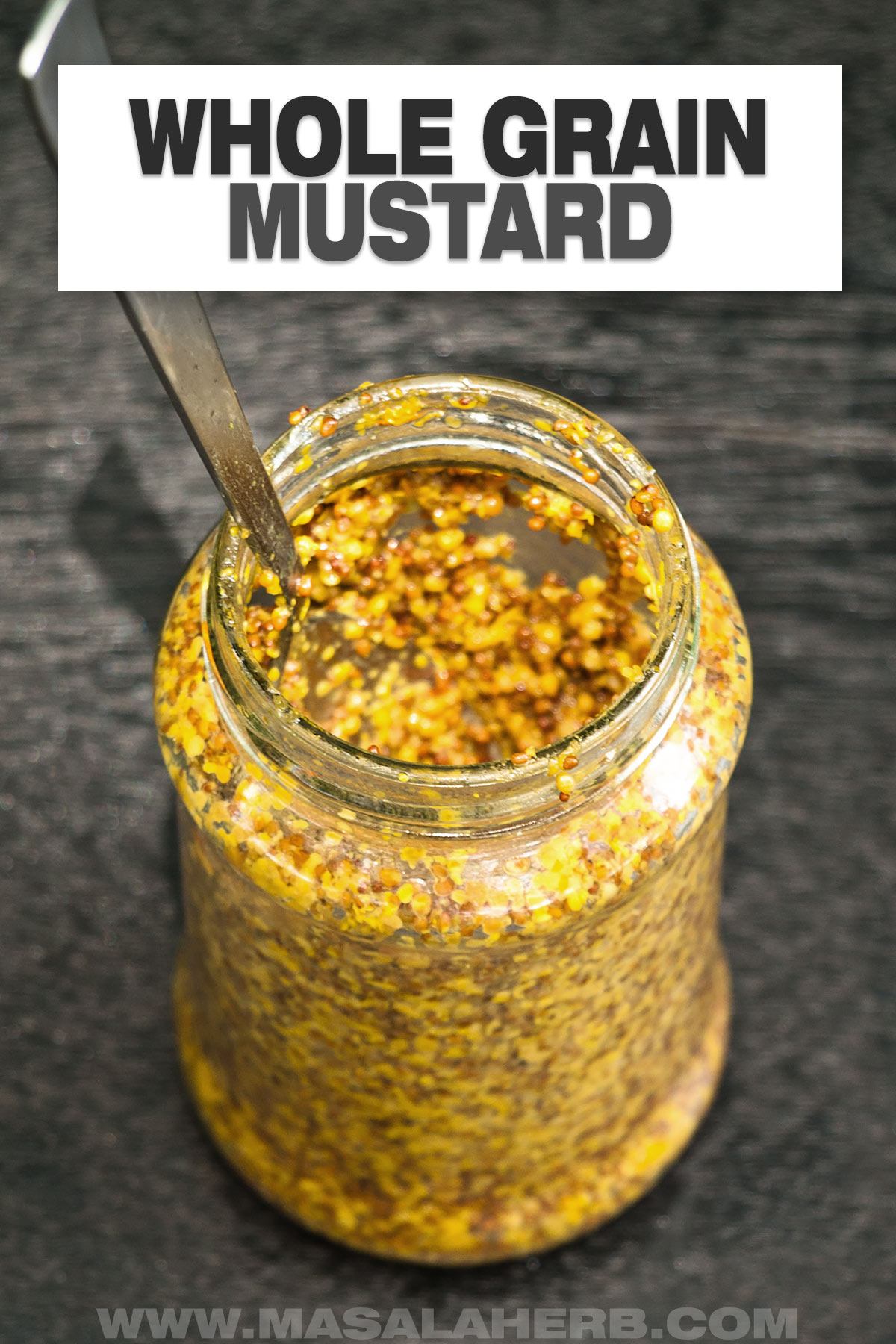
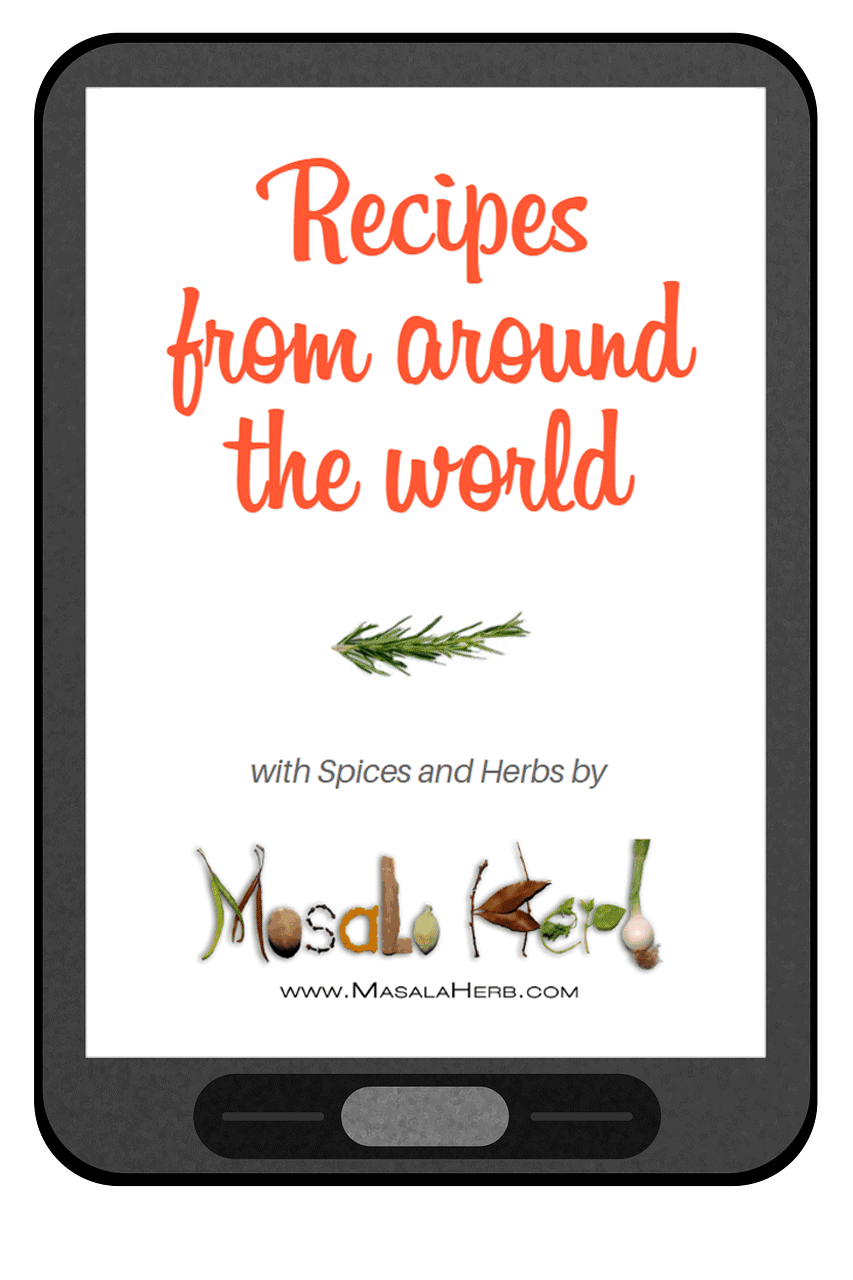
Global Food Recipes
with Spices and Herbs
Free E-Book available for a limited time. Grab yours now and get instantly inspired!
You missed out!
TL;DR
The mustard seed is one of my all-time favorite spices. That might be because my European roots use the yellow seeds commonly in pastes and also because my husband's traditional food culture uses the brown and darker mustard seed versions in Indian cuisine.
Yet, I have noticed that mustard as a spice has often been overlooked and forgotten.
The fact that we commonly buy our mustard pastes ready-made in the Western world got us so far that the mustard seeds almost disappeared from the grocery store shelves and from our kitchens.
However, in the Far and Near East, dark brown and black mustard seeds are more commonly available. In the Western world, bigger yellow mustard seeds are a common sight!
Yet, of course, ready-made mustard pastes in different variations are most popular, such as the classic French Dijon mustard paste, the French Dijon whole grain mustard, or the bright yellow English mustard paste.
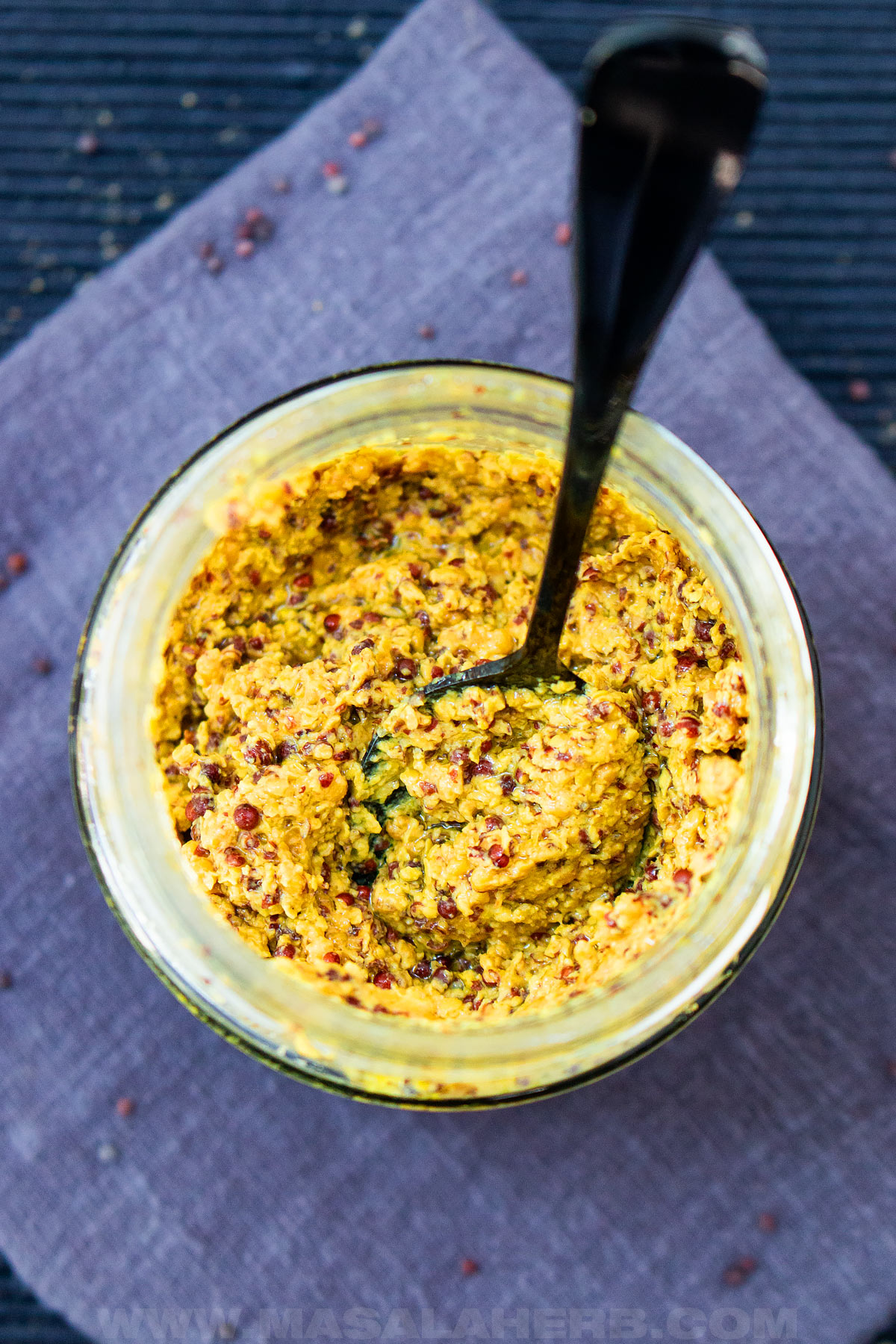
How to make it?
Step 1
Keep the mustard seeds with the vinegar submerged to soak for 1 hour.

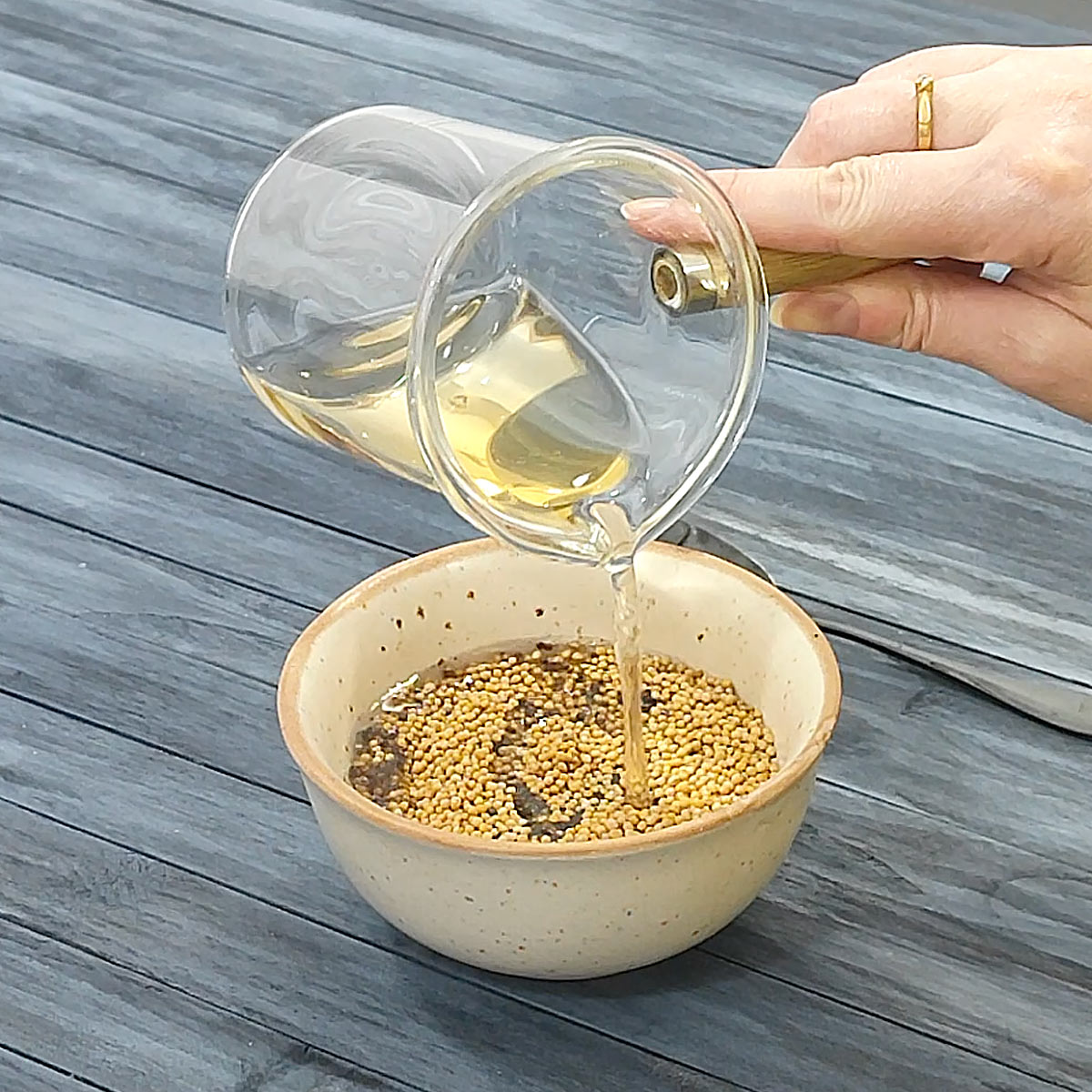
Step 2
Smash or blend the soaked mustard seeds with the vinegar. Use a mortar and pestle OR a food processor.
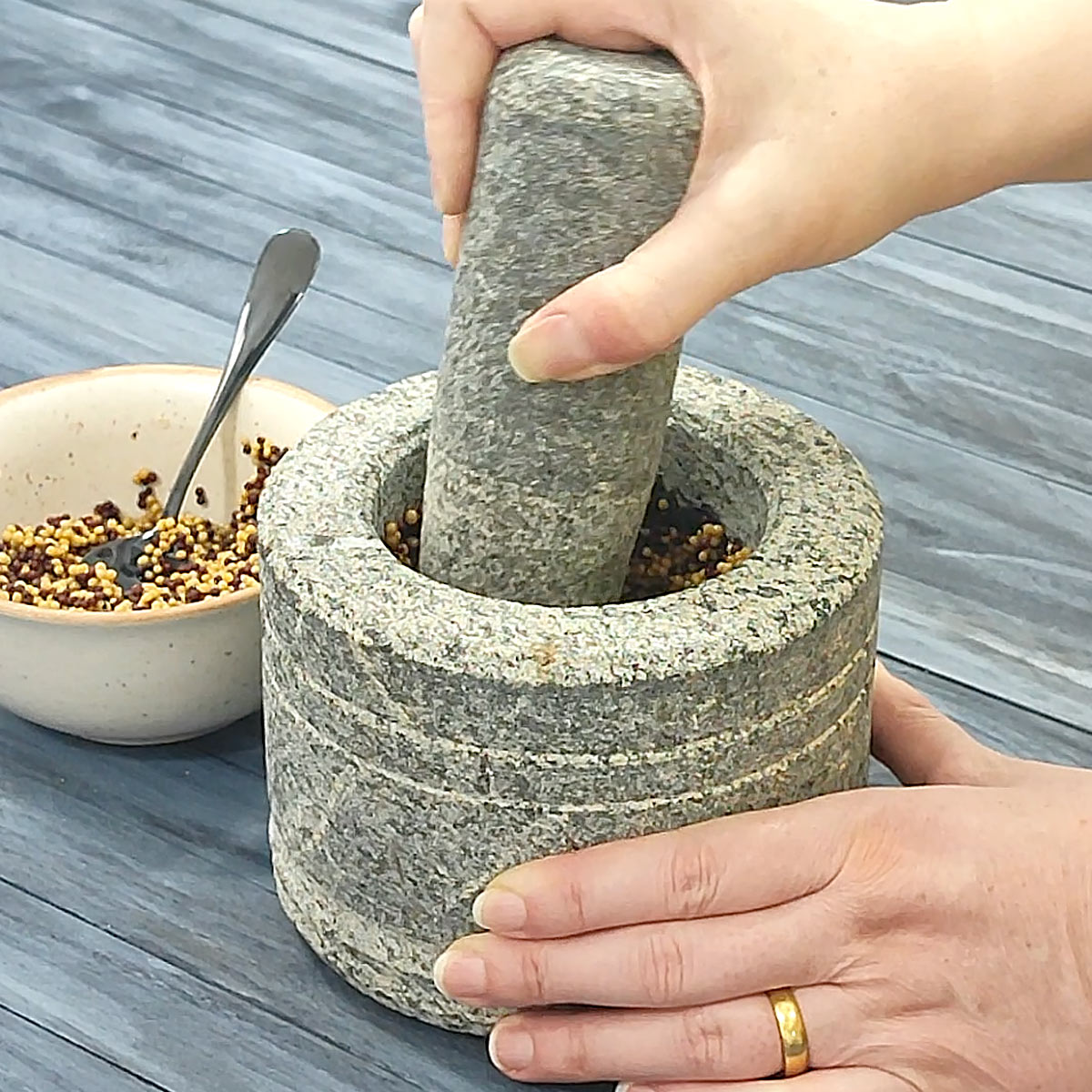
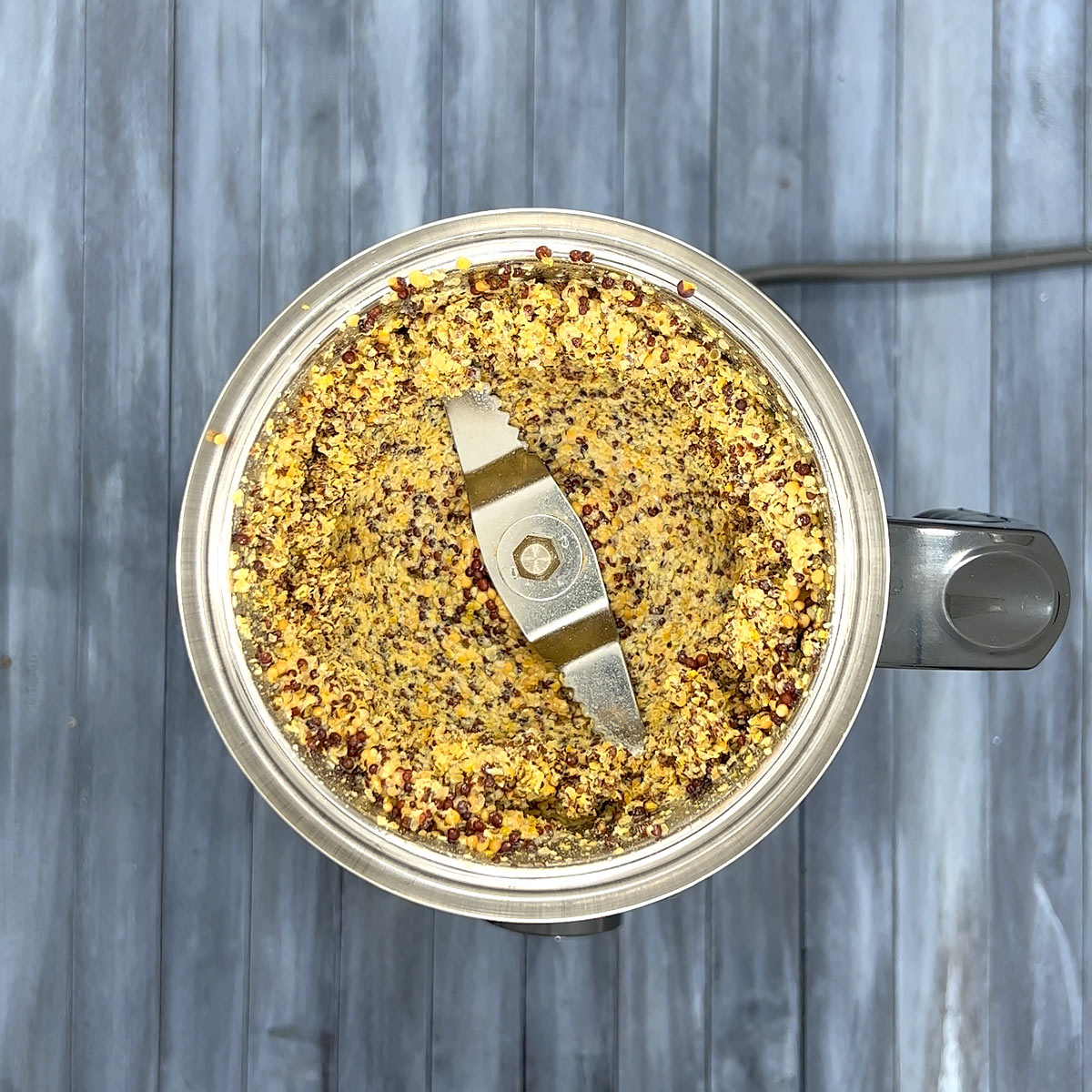
Step 3
Combine the blended mustard paste with the lemon juice, salt, pepper and turmeric powder.
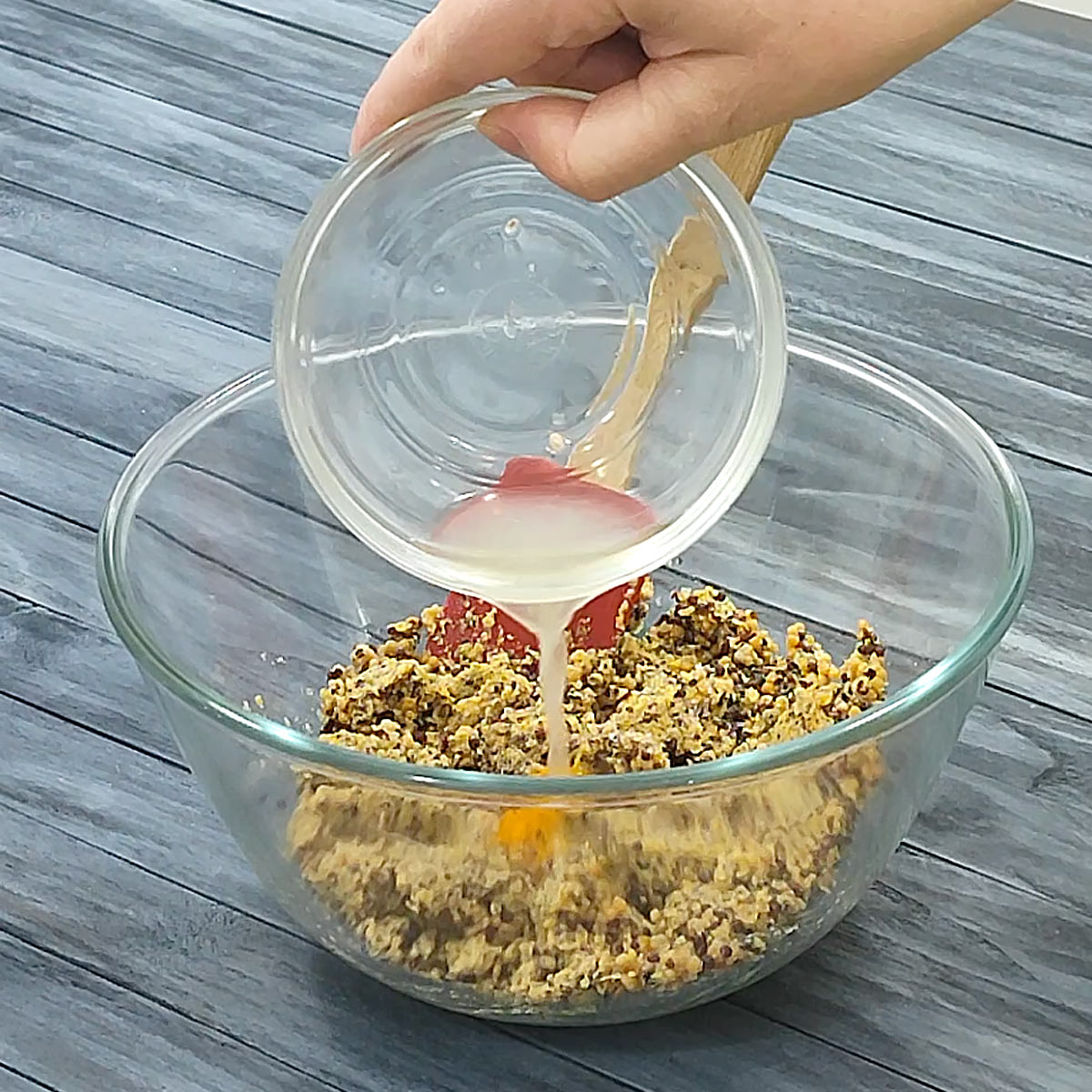
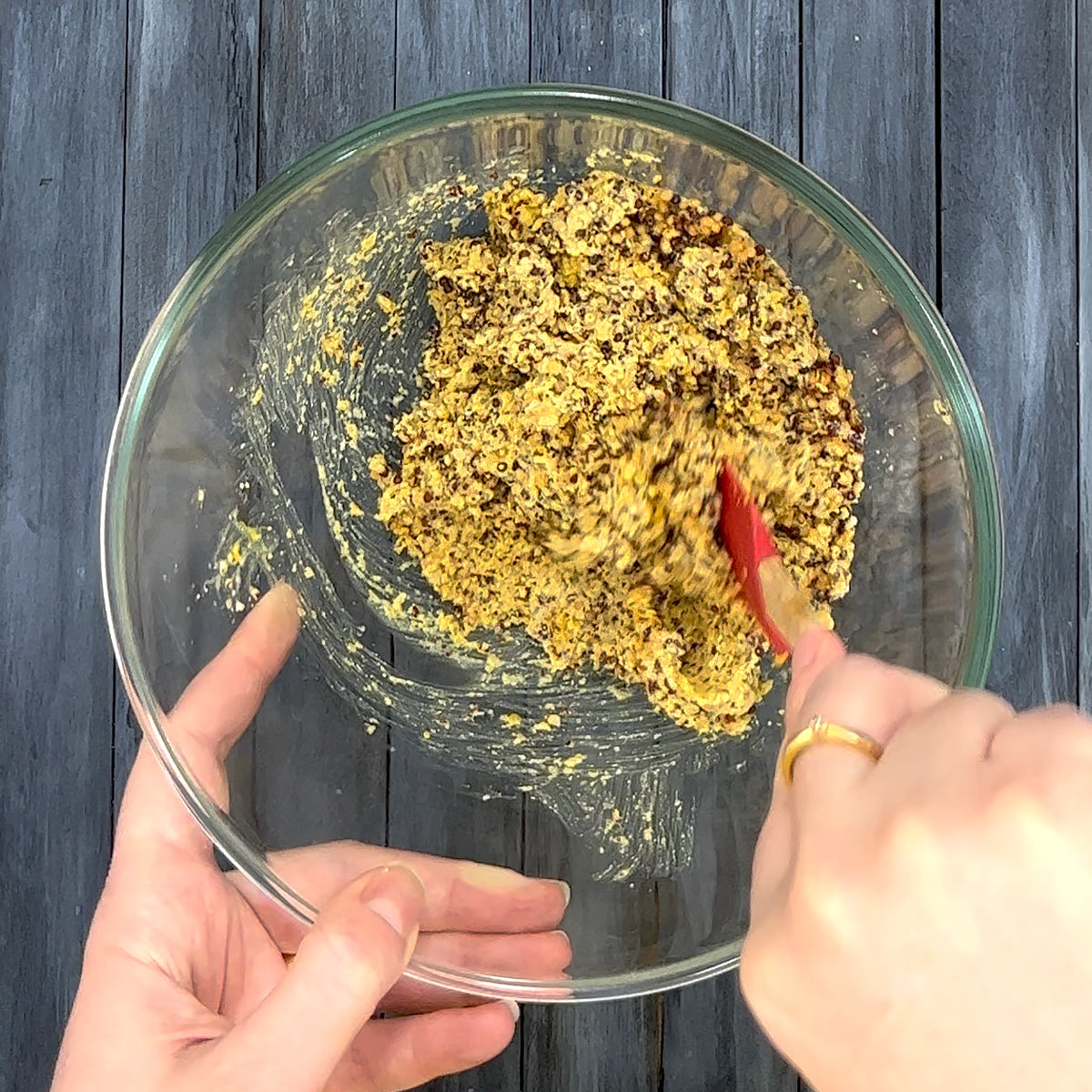
Step 4
Place the condiment into a clean jar. Pour in most of the oil and mix in the oil. Pour the remaining oil over the paste and close the jar.
The condiment needs to “rest” for 4 weeks so that the flavors can develop, and then you can use it as per your needs.
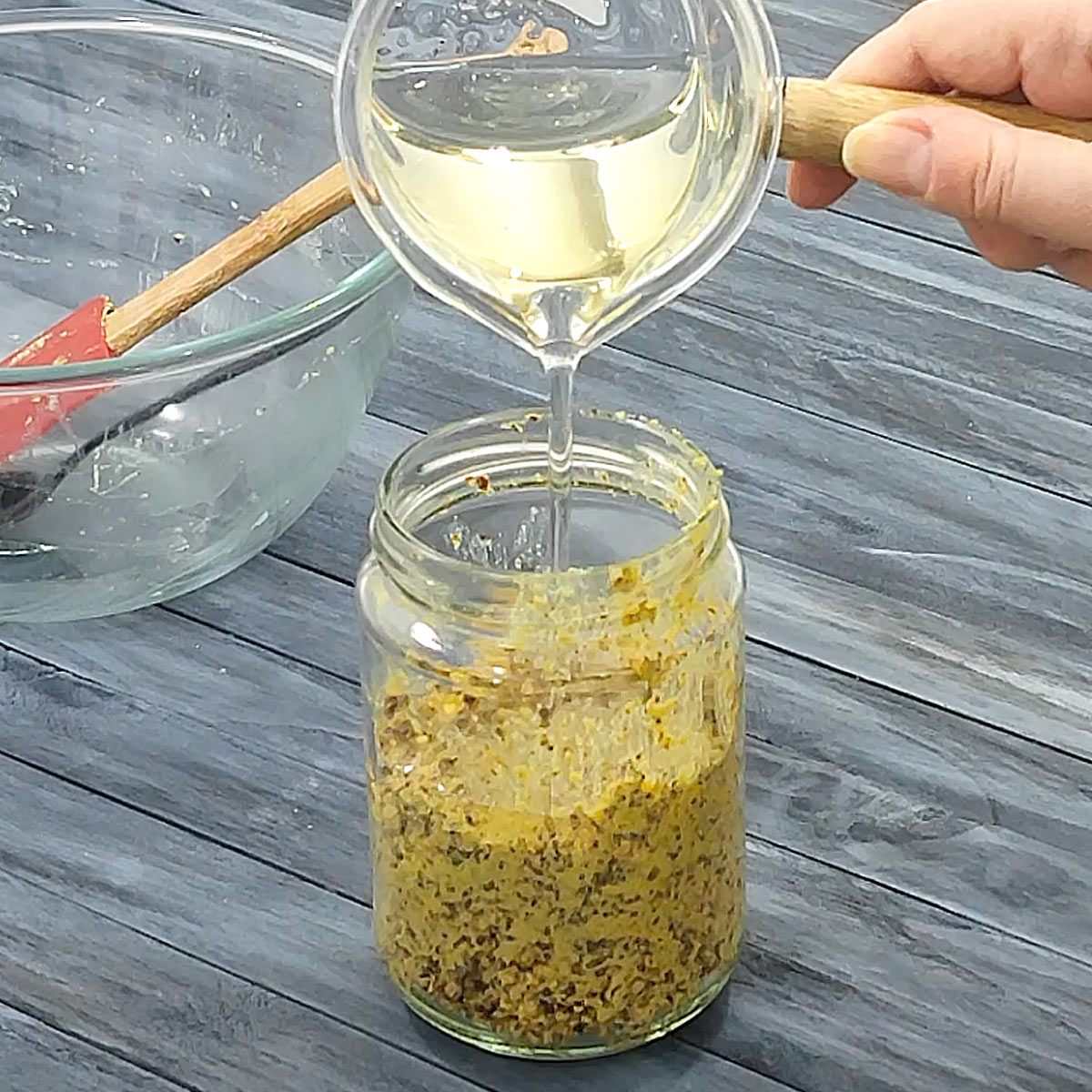

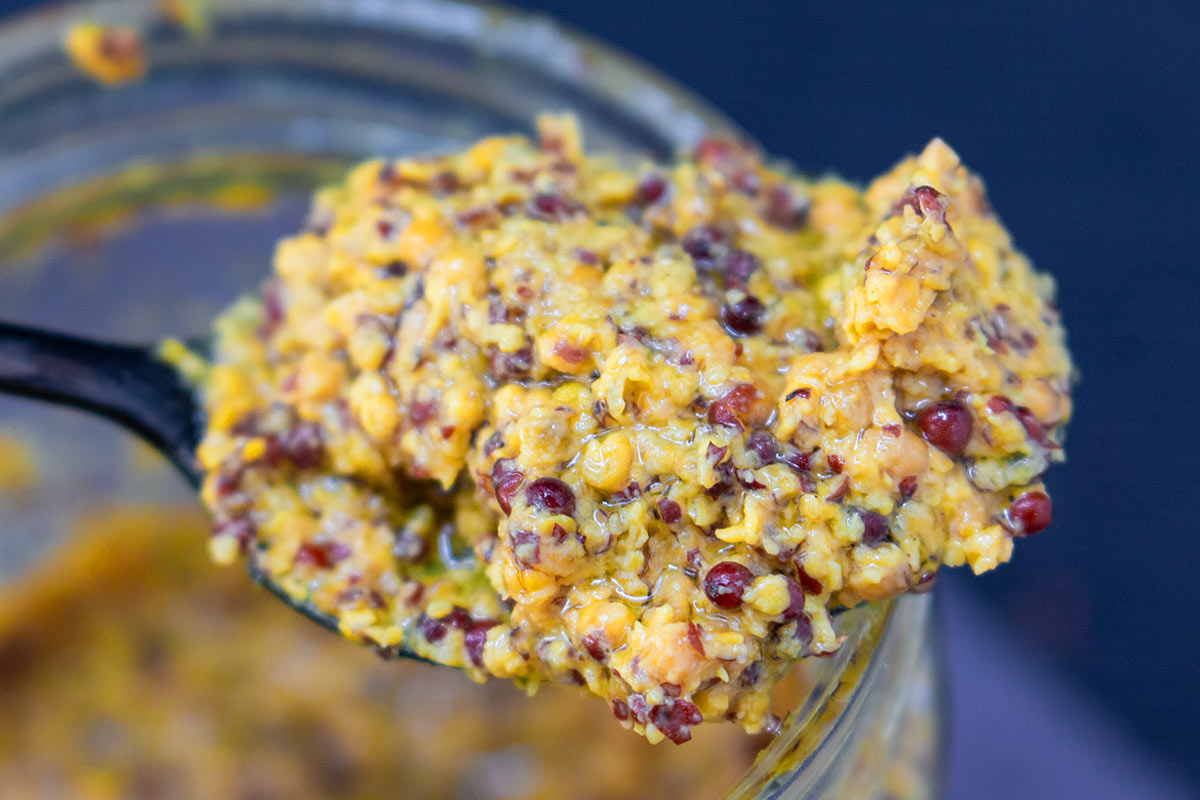
📖 Recipe
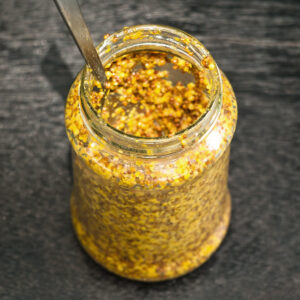
Whole Grain Mustard Recipe
Ingredients
Ingredients:
- ¼ Cup Yellow Mustard Seeds
- ¼ Cup Brown Mustard Seeds
- 9½ Tablespoons White Wine vinegar
- 1 Tablespoon Lemon Juice
- ¼ Teaspoon Salt
- pinch Black Pepper Ground
- ⅛ Teaspoon Turmeric Ground optional
- 3 Tablespoons Oil sunflower or canola oil
Instructions
- Add to a bowl your yellow and brown mustard seeds and cover them with the white wine vinegar. Soak the seeds for one hour. You will notice that the vinegar will bubble a bit when it comes in touch with the mustard seeds, that's alright. We want the seeds to get a bit soft.¼ Cup Yellow Mustard Seeds, ¼ Cup Brown Mustard Seeds, 9½ Tablespoons White Wine vinegar
- Pound or blend the seeds in a food processor. If they have lost a bit of liquid, then add about 1-2 tablespoons of water to the mixture. To pound with the pestle, always add small batches and smash and twist it until most of the yellow seeds have turned into a mush. The brown ones don't crack that easily, but with the pounding, they will crack a bit and emit the flavors.
- In a bowl with the smashed mustard seeds, add the lemon juice, salt, pepper, and turmeric powder. Mix the content well and fill a clean jar with the condiment.1 Tablespoon Lemon Juice, ¼ Teaspoon Salt, pinch Black Pepper Ground, ⅛ Teaspoon Turmeric Ground
- Pour most of the oil into the jar and mix the paste with the oil. Pour remaining oil over the mustard paste and close the jar.3 Tablespoons Oil
- Leave the condiment alone for 4 weeks alone so that the flavors can develop. Keep it out at room temperature if your climate is cold. If it's a hot, humid climate, keep the jar in the fridge after 2 days for the remaining 4 weeks.
Equipment
- Mortar and pestle or food processor
- 1 8 oz Canning Jars 240 ml
Nutrition
Tips
When you make the whole grain mustard condiment, keep in mind that it needs 4-5 weeks to rest before you can enjoy the grainy mustard paste and consume it with your meal.
The longer you keep the seeds to rest/marinate the more flavorful it will be at the end.
In my recipe, I have used White wine vinegar instead of verjuice, and the yellow and dark mustard seed ratio is at 1:1.
Brown and yellow mustard seeds can be easily purchased online, or otherwise look out for mustard seeds in your nearest organic store or ethnic neighborhood grocery store.
In this whole grain mustard recipe, I added a bit more turmeric powder than what they would add in France.
You can adjust the amount of turmeric you would like to add to your copycat Dijon mustard paste. The flavors don't change that much. The color is the main difference and makes the mustard paste pop more.
So that the condiment survives longer, I chose to add more of the antifungal and antibacterial yellow turmeric (Curcuma) spice.


Storing
The paste can be stored in a dry and cool place for months. I usually store the grainy mustard pot in the fridge.
Uses
What is whole grain mustard?
Whole grain mustard is mostly known as whole grain Dijon mustard (from Dijon city in Burgundy, France) or moutard á l'ancienne in French.
Yet as a side note, whole grain or grainy mustard pastes, in general, can be found all over the world in different cuisines. AND there is also a popular ground (non-grainy) Dijon mustard variation.
In this post, we will focus on the whole grain Dijon mustard since this grainy mustard recipe is a Dijon copycat recipe.
It is common knowledge that the making of Dijon mustard, which might be whole grain or ground mustard, is a science and highly secretive recipe of the region in France. Therefore, Dijon mustard received a protected label in the late 1930s.
That means the production has been strictly watched and limited to the region of Burgundy. This whole grain mustard recipe and any other whole grain Dijon style mustard are copycat recipes and can never be sold under the name of Dijon mustard.
So this special protection is just another reason why, generally speaking, Dijon mustard and any other mustard in this world are not the same.
FAQs
The main difference is the mustard grain smoothness. Besides that, whole grain mustard paste is much milder compared to ground mustard paste, all the grainier, and contains mostly a mixture of yellow and black or brown mustard seeds.
The yellow mustard seeds for the ground or whole grain Dijon mustard paste are collected from a certain yellow mustard type, and the seed's “skin” is partially removed. The paste also goes through some kind of fermentation, and the acidity is added with verjuice, a highly acidic juice made by pressing unripe green grapes grown in that region in Burgundy. On the other hand, OTHER French regional whole grain mustard recipes include white wine vinegar, and the procedures and ingredients are different as well. Some recipes even include flour and certain spices such as cumin and turmeric.
In fact, other, non-Dijon mustard pastes that are part of the gourmet mustard paste heritage in France include the green pepper mustard, and the black currant mustard paste. Both are smooth ground mustard pastes.
Mustard seeds, and especially the yellow variety, grow in the Mediterranean area from a small plant into a shrub. The yellow mustard seeds are mostly commercially grown in big quantities in Canada, Russia, and Eastern Europe, such as the Czech Republic and Hungary. Dark brown and dark black mustard seeds are grown in and around the Himalayan region, which includes Nepal, Pakistan, India, Myanmar, and China.
The yellow mustard seeds are often bigger and easier to crush, and they do have a bitter aftertaste. The brown & black mustard seeds are smaller and harder, and I believe they are a bit less pungent compared to their yellow counterparts.
The post Whole Grain Mustard, was first published on January 26t, 2015, and has been updated and enhanced ever since!
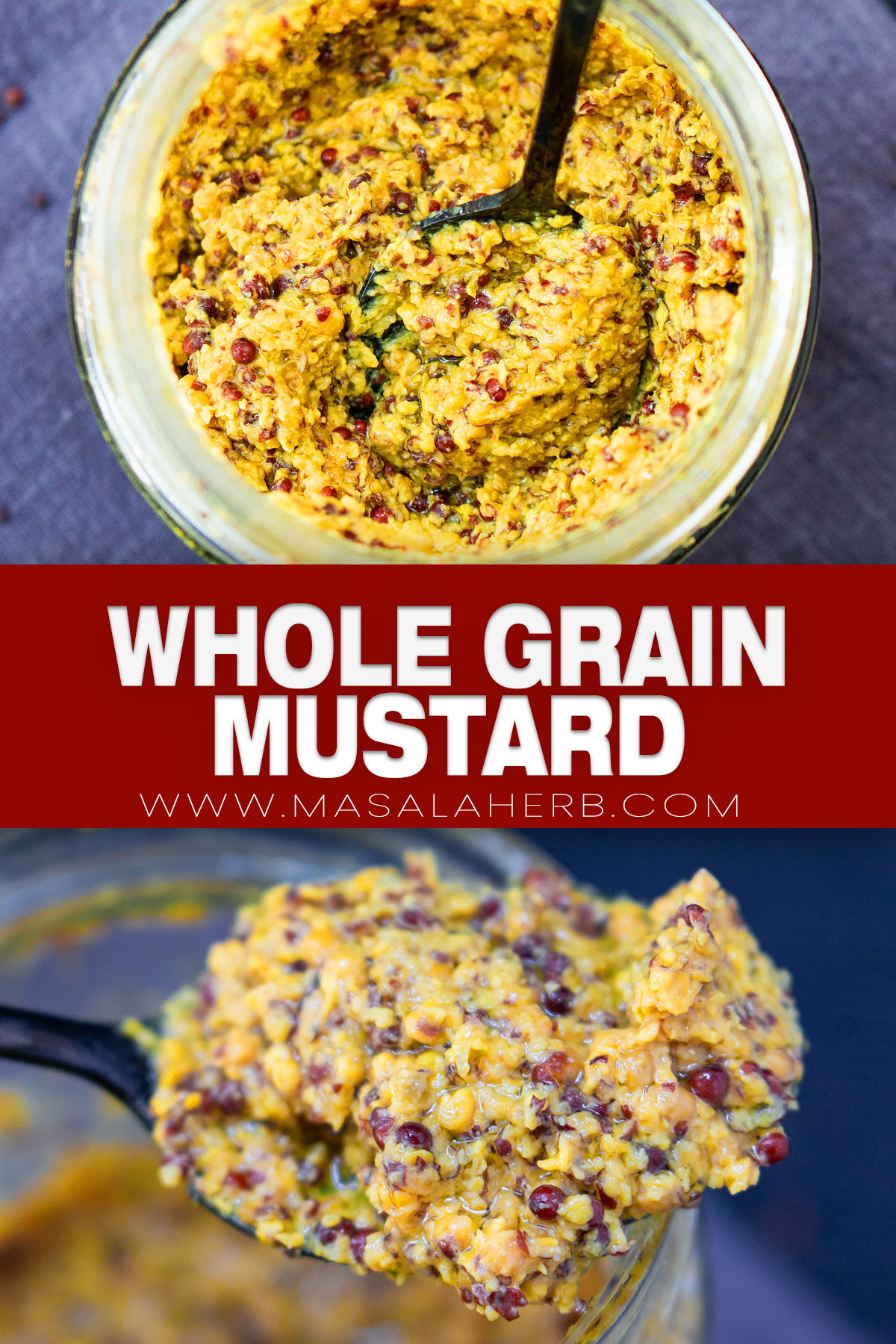

Thanks for this recipe, Helene! I've been wanting to experiment with mustard-making ever since I visited the fabulous Senfmühle in Monschau, Deutschland. I finally took the first step today, inspired by your post and following your recipe, with slight tweaks.
I used whole yellow and black mustard seeds from Penzey's in Milwaukee, presoaked for an hour in Progresso red wine vinegar. I used an immersion blender to grind the seeds right in the jar I'll use for storage, and it worked well. Instead of adding a little water as the paste thickened, I added 1 T. of cooking sherry. I like it spicy so I used ¼ tsp of red & black ground pepper blend. Finally I used a heaping ¼ tsp of French sea salt, and ¼ tsp of tumeric. All my seasonings are from Penzey's. I had canola oil on hand so that's what was used.
I just put it up and am looking forward to giving it a try at this time a month from now. I'll report back then!
Hi Alex, I hope we get to visit the mustard mill in Monschau, Germany, in the future, that sounds like something I'd enjoy visiting! Love your version and that you have added some sherry. Great idea! I'm curious how yours will turn out, and we (me and all other readers) will be looking forward to your feedback. Thank you!